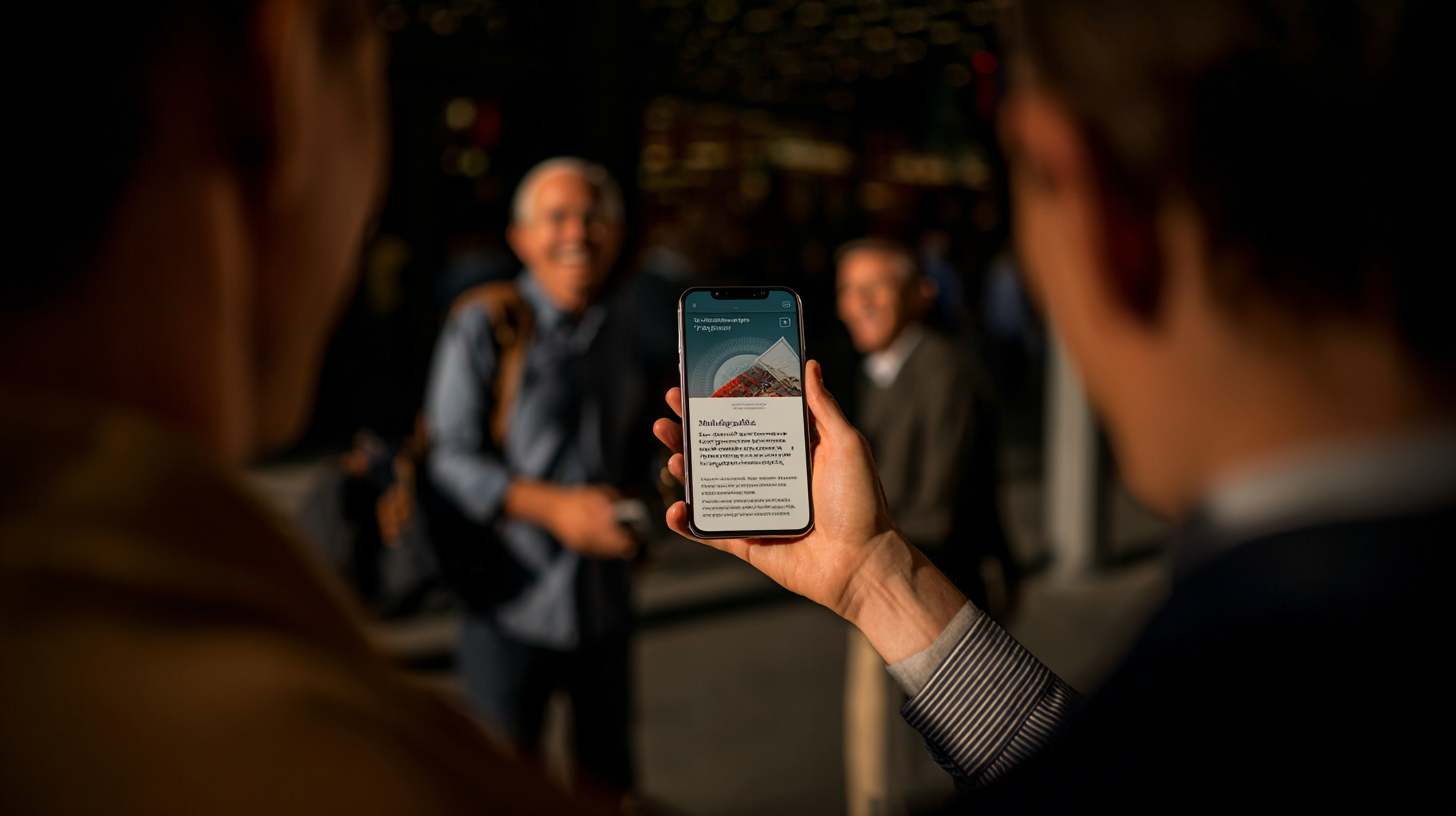Mentoring Content Designers: Building Stronger Teams
Author
Debora BarbatoMentoring isn't just a feel-good exercise – it's a strategic tool to build high-performing content design teams. As a Senior Content Designer who has mentored over 30 content designers at J.P. Morgan Chase, I've seen first-hand how coaching and guidance can boost team delivery by nearly 30%.
In the fast-paced world of digital products, hiring managers and UX leaders are under pressure to scale content quality and velocity. The solution? Foster a mentorship culture that accelerates onboarding, improves retention, and elevates content quality. This grounded perspective, backed by research and cross-industry insights, will show why investing in mentoring pays off for your team and your product.
"Mentoring transforms teams. When I led content design at J.P. Morgan Chase, pairing new content designers with seasoned mentors helped our group deliver content 30% faster without sacrificing quality. It confirmed for me that investing time in people amplifies every aspect of our work."

Debora Barbato
Senior Content DesignerAccelerating Team Velocity and Quality Through Mentorship
In content design – as in any digital product discipline – speed and quality often define success. Mentoring acts as a force multiplier for both. By pairing less experienced content designers with veteran mentors (through buddy systems, shadow programs, etc.), teams help newcomers acclimate faster to their role and company culture. New hires don't waste weeks figuring out "the way we do things here" because mentors share workflows, tools, and unwritten best practices from day one. This targeted knowledge transfer minimizes trial-and-error and accelerates productivity.
Research backs this accelerated ramp-up. A study by Aberdeen Group found that 54% of organizations with formal onboarding (including mentoring) saw greater new-hire productivity, versus those without such programs. In fact, managers who received mentoring improved their productivity by a stunning 88%, compared to just 24% for those who only received training. The lesson is clear: mentoring isn't a luxury – it's a catalyst for faster output and better performance.
Equally important, mentorship safeguards content quality as your team moves faster. In a consumer app team rolling out weekly updates or a travel platform handling rapid policy changes, a mentored content designer is less likely to introduce errors or off-brand copy. Why? Because mentors instill standards and review work, creating a feedback loop that upholds voice and clarity even under tight deadlines. It's akin to a junior pilot learning from a senior captain – speed comes, but safety and precision are never compromised. In my experience, when new content designers are supported rather than left to sink-or-swim, you get consistent, high-quality content at a higher velocity.
Fostering Retention, Engagement and Team Morale
Mentorship doesn't just create better work – it creates happier, more resilient teams. Content designers who feel supported in their growth are far more likely to stay and thrive. Studies show employees in mentorship programs are 49% less likely to leave their company. I saw this with my own team: as mentorship took root, our retention improved because people felt their careers were being nurtured, not just their output measured. A sense of belonging and professional development can dramatically reduce the "revolving door" of talent.
This is especially critical during onboarding. Nearly 90% of employees decide whether to stay at a company within their first six months. Effective mentoring during that window gives new hires a trusted guide and a friend – someone to ask "dumb questions," decode acronyms, and navigate challenges. With mentoring, new hires build confidence and relationships that boost engagement and loyalty. It's no surprise that Gallup found employees who strongly agree their onboarding was great are 2.6× more likely to stay for at least three years. Mentoring makes onboarding personal and supportive, increasing the odds that talented content designers stick around.
Beyond retention stats, the engagement uplift is tangible. 90% of workers with a mentor report being happy in their job, and 89% of employees with mentors feel their work is valued by colleagues – significantly higher than those without mentors. This morale boost feeds back into quality and performance: a content designer who feels valued will put more care into crafting that error message or microcopy. Mentoring thus creates a virtuous cycle of engagement → better work → recognition → more engagement. It also prepares the next generation of leaders; 75% of executives credit their success in part to being mentored. By investing in your people now, you're future-proofing your leadership pipeline and signaling that growth is part of your team's DNA.
Onboarding Done Right: Structured Mentorship from Day One
Successful teams don't leave mentorship to chance – they bake it into their onboarding and culture. If you hire a new content designer for a travel app or fintech product, don't just hand them a style guide and wish them luck. Pair them with a buddy or mentor before they start, and structure the first weeks around mentorship touchpoints. In fact, 93% of new hires want to shadow a colleague and 86% would appreciate a buddy support system as they onboard. This tells us that newcomers are craving guided, human connections as they ramp up.
A structured new-hire mentoring program can solve the most common onboarding failures. Lack of clarity? Mentors provide a go-to contact for questions, addressing new hires' top frustration of not knowing who to ask. Feeling isolated (especially in remote teams)? A mentor offers social connection, reducing that loneliness and helping the hire feel part of the team from day one. It's no wonder companies with formal, intentional onboarding (often including mentorship) experience 50% better new-hire retention than those without. One 2024 study of onboarding processes went further, recommending stronger mentoring programs across companies of all sizes to improve integration. By doing so, organizations can boost retention, engagement, and overall new-hire integration, leading to a more stable, motivated workforce.
To implement this, consider designing your onboarding around mentoring rather than treating it as an add-on. For example, at J.P. Morgan Chase we assigned each content design new-hire a peer mentor. Their first week wasn't just HR orientation; it included shadowing their mentor in design critiques, pair-writing on a small task together, and coffee chats to learn company lore. We set milestones – e.g. by week 2, the mentee publishes a minor content update with mentor feedback; at 30 days, they lead a small content project with mentor oversight. These structured checkpoints ensured continuous feedback loops. Mentors and managers would sync up on progress, and at 90 days we held a feedback session to see what worked and what could improve (for both mentee and mentor). This deliberate approach paid off: new hires were hitting their stride faster, and we could literally measure that content deliverables were happening sooner without quality issues. Our experience aligns with broader findings that mentoring accelerates the adjustment period and enhances long-term performance of new employees.
Crucially, a mentorship culture requires leadership endorsement. Team leads should celebrate mentoring wins (for example, highlight how a mentor-mentee pair solved a UX copy problem together). Encourage mentors to share knowledge widely – maybe rotating mentor roles or creating a content design playbook sourced from mentorship learnings. The goal is a culture where asking for help is encouraged and coaching becomes second nature. When mentorship is ingrained, even fast-growing teams (like those in consumer apps scaling globally) can maintain cohesion. As one JLL research report noted, mentors often have years of experience and can pass on practical knowledge quickly, boosting the ROI of formal training and helping juniors upskill faster. In other words, mentorship makes your whole organization more adaptive and learning-oriented, which is a huge competitive advantage in the digital product space.
Cross-Industry Inspiration: What Travel and Consumer Apps Teach Us
Looking beyond the content design field can inspire how we approach mentoring. Consider the travel industry: Airlines have long used a mentorship/apprenticeship model (first officers learn directly under captains) because the stakes are high. In digital travel products, stakes are high too – content designers must convey critical information (like safety policies or last-minute itinerary changes) accurately and quickly. Leading travel apps often mirror the airline approach by having new writers and designers shadow experienced team members in live projects, ensuring consistency from the start. The result is faster onboarding and fewer content errors reaching customers, because new hires aren't learning in isolation. They're guided through the complexity of, say, internationalization nuances or urgent update workflows, much like a junior pilot learning how to handle turbulence with a mentor by their side.
Consumer app companies likewise thrive on mentorship to maintain their pace. Think of a social media platform deploying UI text updates weekly – they can't afford a junior content designer pushing a confusing prompt to millions of users due to lack of guidance. Companies known for product excellence (like those in Silicon Valley) often pair newcomers with seasoned writers for code reviews or content crits, ensuring quality control and rapid skill-building. This practice echoes how engineering teams use code mentorship or design teams run critique sessions. The cross-functional lesson is the same: structured mentorship keeps quality high even as velocity increases. If it works in the pressure-cooker environment of a global consumer app, it can work for your content design team.
Moreover, other domains remind us that mentoring fuels innovation. A mentored designer on a travel app might learn to experiment with a new tone or microcopy approach faster by observing a mentor's process, similar to how creative agencies use apprenticeships to spark fresh ideas. Diverse perspectives from mentor-mentee pairs can lead to creative solutions – an insight equally relevant whether you're improving a banking dashboard or a travel booking flow. By drawing inspiration from how other industries integrate mentoring (formally or informally) into skill development, content design leaders can craft programs that are both innovative and grounded in proven practices.
Takeaways for Content Design Leaders and Hiring Managers
If you're looking to invest in a mentoring program for content designers, here are some actionable steps and considerations:
- Make mentorship a formal part of onboarding: Don't leave it to chance. Assign each new content designer a mentor or buddy from day one. Structure the first few months with shadowing opportunities, regular check-ins, and guided projects. Formalizing this process ensures every new hire gets a consistent, supportive ramp-up.
- Establish feedback loops and checkpoints: Encourage mentors and mentees to set goals and meet frequently. For instance, a quick 10-minute daily sync in week one, then weekly one-on-ones thereafter. Schedule a 30- or 90-day review where both mentor and mentee reflect on progress and challenges. These feedback loops create accountability and allow you to measure acceleration (e.g., track how quickly new hires achieve key milestones with mentoring support).
- Encourage a culture of knowledge sharing: Mentoring should be part of a broader learning culture. Host bi-weekly content design "show and tells" or retros where mentors and new designers share what they've learned. This normalizes continuous learning and prevents siloed knowledge. It also empowers junior team members to voice ideas early, knowing they have a mentor backing them up – a big boon for confidence and team cohesion.
- Support and recognize mentors: Great mentors are made, not born. Train your mentors in how to coach (active listening, giving constructive feedback, etc.) so that they feel equipped. And importantly, acknowledge their contributions. Mentorship is a skill that impacts the bottom line – for example, Sun Microsystems found 20% higher retention among mentored staff, saving an estimated $6.7 million in turnover costs. Recognize mentors in performance reviews or team meetings, and you'll encourage more leaders to step up.
- Measure impact on both people and product: Track metrics like retention of new hires, time to full productivity, and even content quality improvements (fewer revisions needed, consistency scores, user feedback on content). Strong mentorship should correlate with positive trends in these areas. For instance, if your team's delivery speed improved by 30% after implementing a mentorship program (as mine did), share that data with executives. It builds the business case to continue investing in mentorship and perhaps expand it.
Conclusion
In conclusion, mentoring content designers is one of those high-ROI investments that can transform your team from the inside out. It accelerates growth for individuals, which in turn drives better outcomes for the product and business. Teams with a mentorship culture ship content faster, retain talent longer, and produce higher-quality user experiences. And they do so with a sense of camaraderie and continuous improvement that no training manual alone could ever create.
As leaders, if we want stronger teams and better product outcomes, mentoring is not just an option – it's a must-have strategy to build the content design teams of tomorrow. The stronger the mentorship, the stronger the team. Now is the time to invest in your people and reap the rewards in performance, retention, and truly delightful content that connects with users. Your team (and your future self) will thank you for it.


